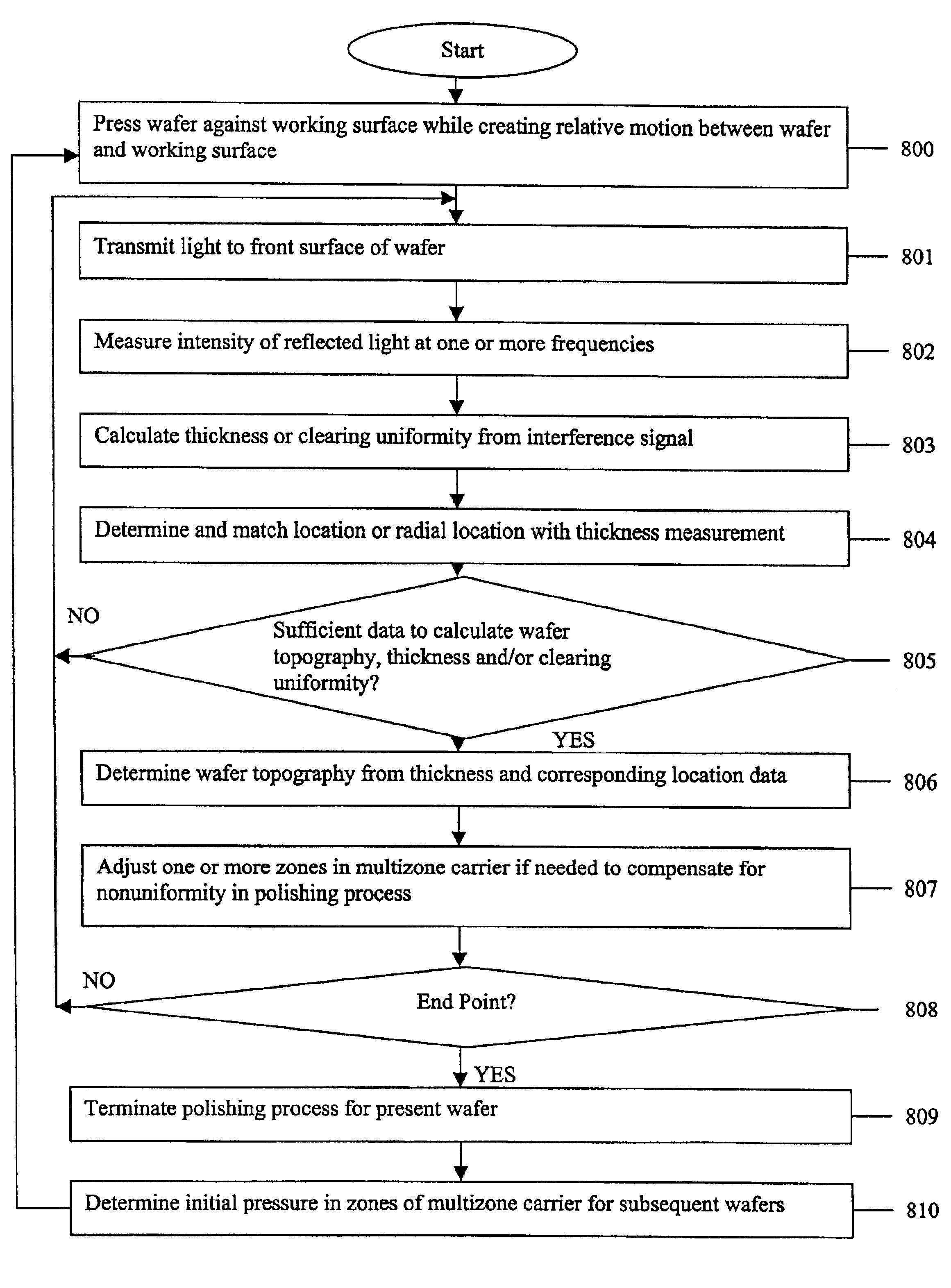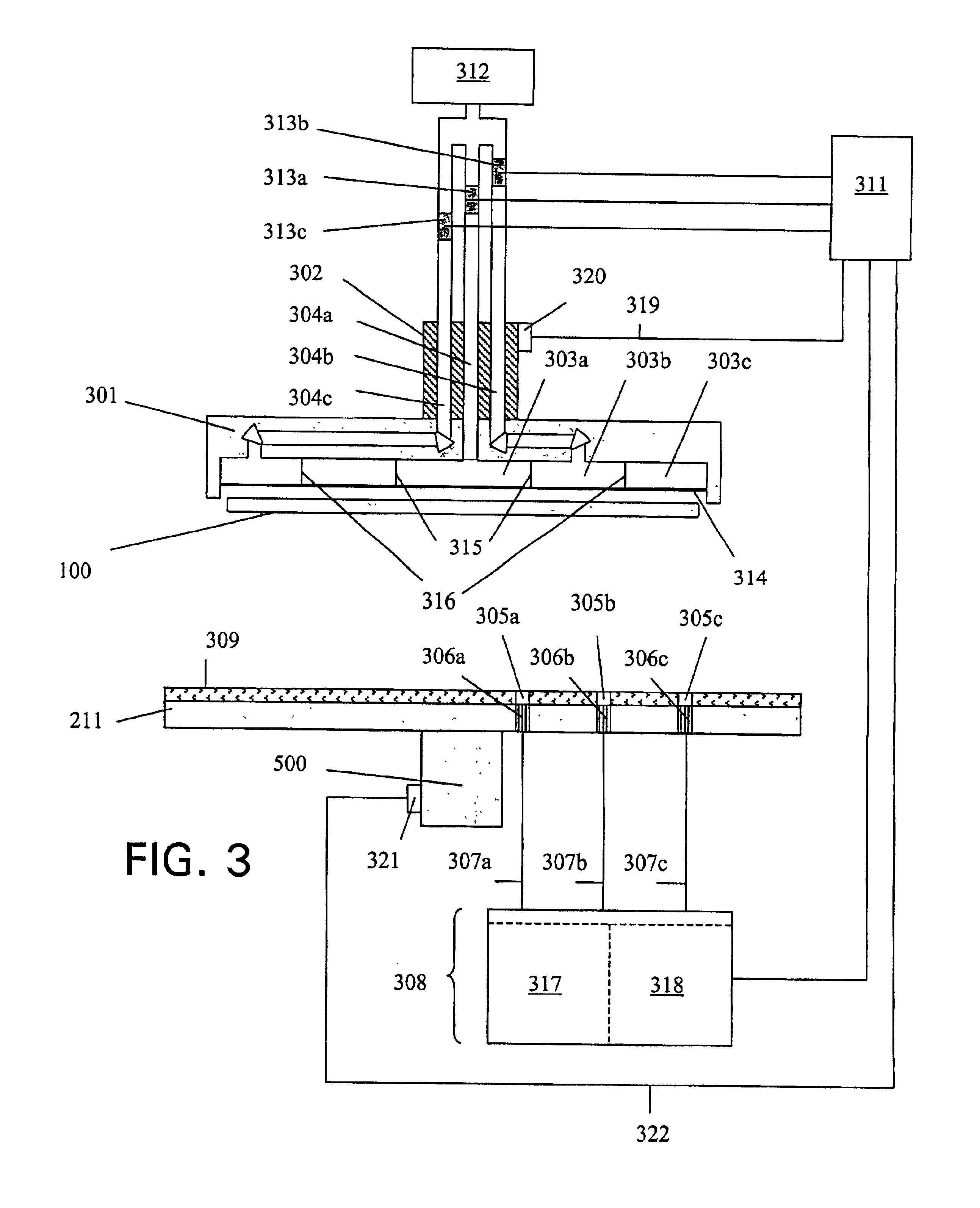Multizone carrier with process monitoring system for chemical-mechanical planarization tool
a multi-zone carrier and process monitoring technology, applied in the field of semiconductor manufacturing, can solve the problems of poor optical resolution of subsequent photolithography processing steps, both faces of the wafer to be extremely rough, and poor optical resolution of non-planar surfaces, etc., to achieve the effect of preventing the printing of high-density lines and poor optical resolution
- Summary
- Abstract
- Description
- Claims
- Application Information
AI Technical Summary
Benefits of technology
Problems solved by technology
Method used
Image
Examples
Embodiment Construction
[0034]An improved polishing apparatus and method utilized in the polishing of semiconductor wafers and thin films formed thereon will now be described. In the following description, numerous specific details are set forth illustrating Applicant's best mode for practicing the present invention and enabling one of ordinary skill in the art to make and use the present invention. It will be known, however, to one skilled in the art that the present invention may be practiced without these specific details. In other instances, well-known machines and process steps have not been described in particular detail in order to avoid unnecessarily obscuring the present invention.
[0035]An apparatus for practicing the present invention will now be discussed with reference to FIG. 3. During a planarization process, a wafer 100 may be transported by a carrier 301 to a position adjacent and substantially parallel to a working surface or polishing pad 309. The front surface of the wafer 100 is pressed...
PUM
 Login to View More
Login to View More Abstract
Description
Claims
Application Information
 Login to View More
Login to View More - R&D
- Intellectual Property
- Life Sciences
- Materials
- Tech Scout
- Unparalleled Data Quality
- Higher Quality Content
- 60% Fewer Hallucinations
Browse by: Latest US Patents, China's latest patents, Technical Efficacy Thesaurus, Application Domain, Technology Topic, Popular Technical Reports.
© 2025 PatSnap. All rights reserved.Legal|Privacy policy|Modern Slavery Act Transparency Statement|Sitemap|About US| Contact US: help@patsnap.com



